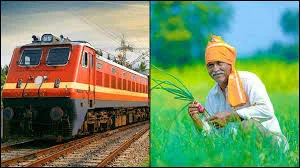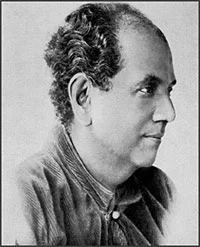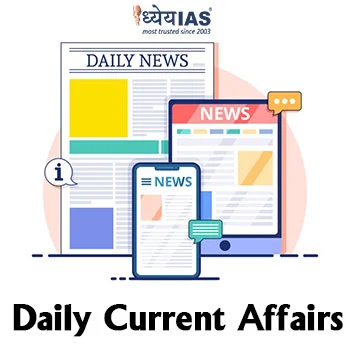Monetary Policy Committee (MPC)
Why in NEWS?
- RBI’s 24th Monetary Policy Committee meeting which took place from 04th- 06th August 2020.

About 24th Monetary Policy Committee meeting
- It unanimously decided to leave the policy repo rate unchanged at 4% and the reverse repo rate at 3.35% against a backdrop of rising inflationary pressure and a grim economic outlook.
- This is the lowest level recorded since 2000.
- The MPC also maintained its "accommodative" stance on monetary policy - which rules out any hike in the key rate for the time being and it will continue as long as necessary to revive growth and mitigate the impact of COVID-19 pandemic while ensuring that inflation remains within target going forward.
- The RBI had reduced the repo rate by a total of 115 basis points since February, on top of the 135 basis points in an easing cycle last year, from 6.50%, responding to slowing growth.
- In June, retail inflation soared to 6.09% amid a jump in the prices of food items, from 5.84% in March, remaining above the RBI's medium-term target range of 2%-6%. The government has tasked RBI to keep inflation at 4% (+, - 2%).
About MPC
- The RBI has a government-constituted Monetary Policy Committee (MPC), under Section 45ZB of the RBI Act that was amended in 1934, with the mission of fixing the benchmark policy interest rate and framing monetary policy using tools like the repo rate, reverse repo rate, bank rate, cash reserve ratio (CRR) to restrain inflation within the particular target level.
- The committee will have six members with government nominating three and no government official will be nominated to the MPC.
- The other three members would be from the RBI with the governor being the ex-officio chairperson.
- Deputy governor of RBI in charge of the monetary policy will be a member, as also an executive director of the central bank.
- Members of the MPC will be appointed for a period of four years and shall not be eligible for reappointment.
Kisan Rail
Why in NEWS?
- The Indian Railways is set to introduce the first “Kisan Rail” from Maharastra’s Devlali to Bihar’s Danapur.

About
- As announced in the current year’s Union Budget by the finance minister, Indian Railways is introducing first “Kisan Rail” from Devlali to Danapur.
- Indian Railways have earlier run single commodity special trains like Banana Specials. However, this will be the first-ever multi-commodity train and will carry fruits like pomegranate, banana, grapes etc and vegetables like capsicum, cauliflower, drumsticks, cabbage, onion and chillies.
About Kisan Rail
- It is a part of an ambitious plan to build a seamless national cold supply chain for perishables, inclusive of milk, meat, and fish, announced in the Union Budget 2020-21.
- The train will run on a weekly basis. It will start from Devlali at 11 am and will reach Danapur by around 6.45 pm on Saturday, covering a distance of 1,519 km in around 32 hours.
- This train is a step towards realising the goal of doubling farmers’ incomes by 2022.
- Indian Railways aims to help double farmers’ income with the launch of Kisan Rail.
- It will help in bringing perishable agricultural products like vegetables, fruits to the market in a short period of time.
- The train with frozen containers is expected to build a seamless national cold supply chain for perishables, inclusive of fish, meat and milk.
- Central Railway's Bhusawal division is primarily an agro-based division. Nasik and the surrounding regions produce a huge quantity of fresh vegetables, fruits, flowers, other perishables, onions and other agro products. These perishables are mainly transported to areas around Patna, Prayagraj, Katni and Satna.
- Train has been provided scheduled halts at Nasik Road, Manmad, Jalgaon, Bhusaval, Burhanpur, Khandwa, Itarsi, Jabalpur, Satna, Katni, Manikpur, Prayagraj Chheoki, Pt. Deendayal Upadhyay Nagar and Buxar.
150th Birth Anniversary of Abanindranath Tagore on 7th August 2020
IN NEWS
- National Galary of Modern Art (NGMA), New Delhi will organise the virtual tour titled “The Great Maestro | Abanindranath Tagore” to commemorate the 150th Birth Anniversary of Abanindranath Tagore on 7th August 2020.

ABOUT
- “The Great Maestro – Abanindranath Tagore”, organized to commemorate the 150th Birth Anniversary of Abanindranath Tagore on 7th August 2020. The NGMA takes pride in 99 works of art created by the iconic artist which are a part of prestigious collection.
- This virtual tour presents the 77 works of art from the prominent artworks of Abanindranath Tagore from reserve collection of NGMA, grouped in a series of four different themes of (i) Portraits and Characters, (ii) Tradition with Sensibility, (iii) Individual Style, (iv) Landscape of Interiority.
- This virtual tour also includes ‘Jeevansmriti’ to throw light into the memory lane and ‘Quiz’ based on the life and the works of the Great Maestro.
ABANINDRANATH TAGORE
- Abanindranath Tagore (7 August 1871 – 5 December 1951) was the principal artist and creator of the "Indian Society of Oriental Art". He was also the first major exponent of Swadeshi values in Indian art, thereby founding the influential Bengal school of art, which led to the development of modern Indian painting
- Abanindranath Tagore is a singular figure in modern Indian art. He had a leaning towards painting images with historic or literary allusions. He liked to paint sets of images dealing with a theme or a text such as the 'Arabian Nights' or the 'Krishna Leela'.
- He also enjoyed painting theatrical subjects. Literature and drama held great respect for him and he was an elegant and accomplished writer.
- As a modernist at heart who was guided more by his sensibility than his training, he transformed the post-Renaissance academic realism into which he was trained with his series of contacts with oriental art into something more supple and responsive to the imaginative flights of his mind.
Virtual Event on UNESCO-IOC
IN NEWS
- Virtual Event on UNESCO-IOC Tsunami Ready Recognition to Odisha Communities on 07th Aug 2020.
- A tsunami is a series of waves in a water body caused by the displacement of a large volume of water, generally in an ocean or a large lake. Earthquakes, volcanic eruptions and other underwater explosions above or below water all have the potential to generate a tsunami.
ABOUT
- Tsunami Ready is a community performance-based programme initiated by the Intergovernmental Oceanographic Commission (IOC) of UNESCO to promote tsunami preparedness through active collaboration of public, community leaders, and national and local emergency management agencies.
- The National Board, after the verification of implementation of the indicators at those villages as per guidelines, decided to recognize them nationally and recommended to UNESCO-IOC for the recognition. Based on the National Board recommendations, UNESCO-IOC has approved the recognition of two communities viz., Venkatraipur and Noliasahi as Tsunami Ready Communities.
- With this recognition, India is the first country to implement Tsunami Ready in the Indian Ocean Region and Odisha is the first state.
OBJECTIVE
- The main objective of this programme is to improve coastal community's preparedness for tsunami emergencies, to minimize the loss of life and property and to ensure a structural and systematic approach in building community preparedness through fulfilling the best-practice indicators set by the Intergovernmental Coordination Group for the Indian Ocean Tsunami Warning and Mitigation System (ICG/IOTWMS) of UNESCO-IOC.
STEPS TAKEN
- The Indian Tsunami Early Warning Centre (ITEWC), INCOIS is the nodal agency to provide tsunami advisories to India. INCOIS is also providing tsunami advisories to Indian Ocean region (25 countries) as a Tsunami Service Providers as the responsibility assigned by IOC-UNESCO.
- To create awareness and preparedness about the tsunamis, INCOIS regularly organizes Tsunami Standard Operating Procedure (SOP) workshops, training sessions and seminars for state and district level Disaster Management Officials (DMOs) of the coastal states.
CONCLUSION
- Through the continuous effort of scientists and emergency management officers, there has been substantial improvement in tsunami warnings and timelines by deploying better sensors, accurate models and concurrent multiple modes of dissemination.
- However, the success of a warning is measured by what actions people take once the respective authorities issue a public warning. Surviving a tsunami depends on the ability of an individual in the hazard zone to recognize warning signals, make correct decisions, and act quickly.
Prelims Practice Question (MCQ Quiz)
Q1. Consider the following statement regarding Monetary Policy Committee (MPC)-
1. It has six members with three being appointed by government while rest
three from are RBI.
2. Members will be appointed for period of five years.
3. RBI governor is the ex-officio chairperson of MPC
Select the correct option-
a. 1 and 2
b. 2 Only
c. 1 and 3
d. 1,2 and 3
Answer: C
Explanation: Members of the MPC will be appointed for a period of four years and shall not be eligible for reappointment.
Q2. Consider the following statement regarding Kisan Rail introduced by Indian Railway-
1. It will start from Devlali in Maharashtra and destined to reach
Danapur in Bihar.
2. This is Indian Railways’ first initiative to have run single commodity
special trains.
Select the correct option-
a. 1 Only
b. 2 Only
c. 1 and 2 Both
d. Neither 1 nor 2
Answer: A
Explanation: Indian Railways have earlier run single commodity special trains like Banana Specials. However, Kisan Rail will be the first-ever multi-commodity train and will carry fruits like pomegranate, banana, grapes etc and vegetables like capsicum, cauliflower, drumsticks, cabbage, onion and chillies.
Q3. CONSIDER THE FOLLOWING STATEMENT AND CHOOSE THE CORRECT ONE-
A. The National Gallery of Modern Art (NGMA) is
the premier art gallery under Ministry of Culture, Government of India. The
main museum at Jaipur House in New Delhi was established on 29th March 1954
by the Government of India, with subsequent branches at Mumbai and
Bangalore.
B. National Galary of Modern Art, New Delhi will organise the virtual
tour titled “The Great Maestro | Abanindranath Tagore” to commemorate the
150th Birth Anniversary of Abanindranath Tagore on 7th August 2020.
OPTION
1. A only
2. B only
3. Both
4. None of the above.
Answer-3
Explanation- Not Required.
Q4. CONSIDER THE FOLLOWING STATEMENT AND CHOOSE THE CORRECT ONE-
A. Indian National Center for Ocean Information
Services (INCOIS) is an autonomous organization of the Government of India,
under the Ministry of Earth Sciences, located in Pragathi Nagar, Hyderabad.
B. The main activity of this group in INCOIS is to measure and
monitor the surface temperature and salinity of the upper 8000 meters of the
ocean.
OPTION
1. A only
2. B only
3. Both
4. None of the above.
Answer-1
Explanation- The main activity of this group in INCOIS is to measure and monitor the surface temperature and salinity of the upper 2000 meters of the ocean.










